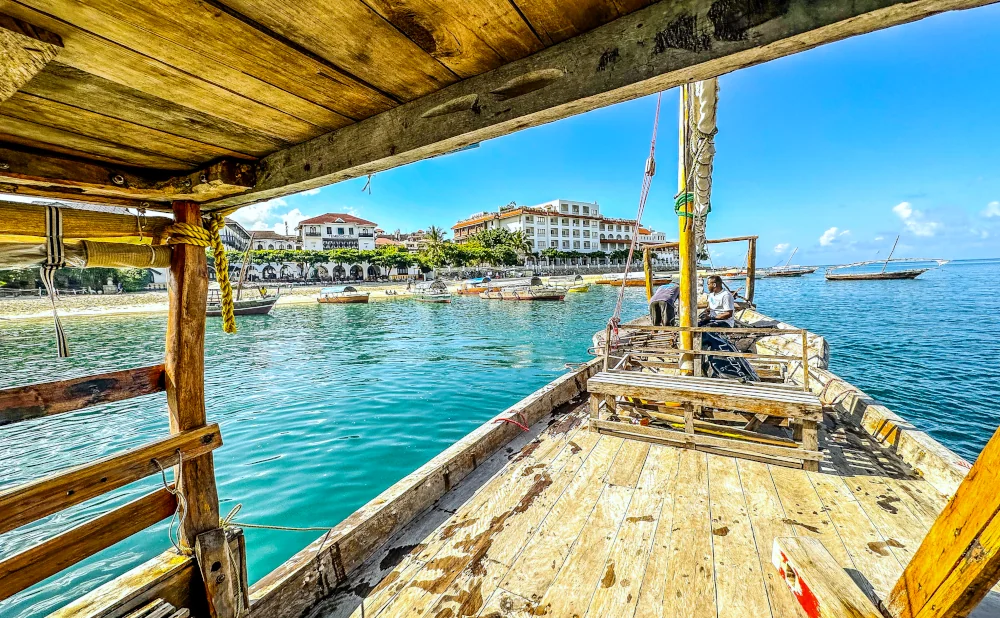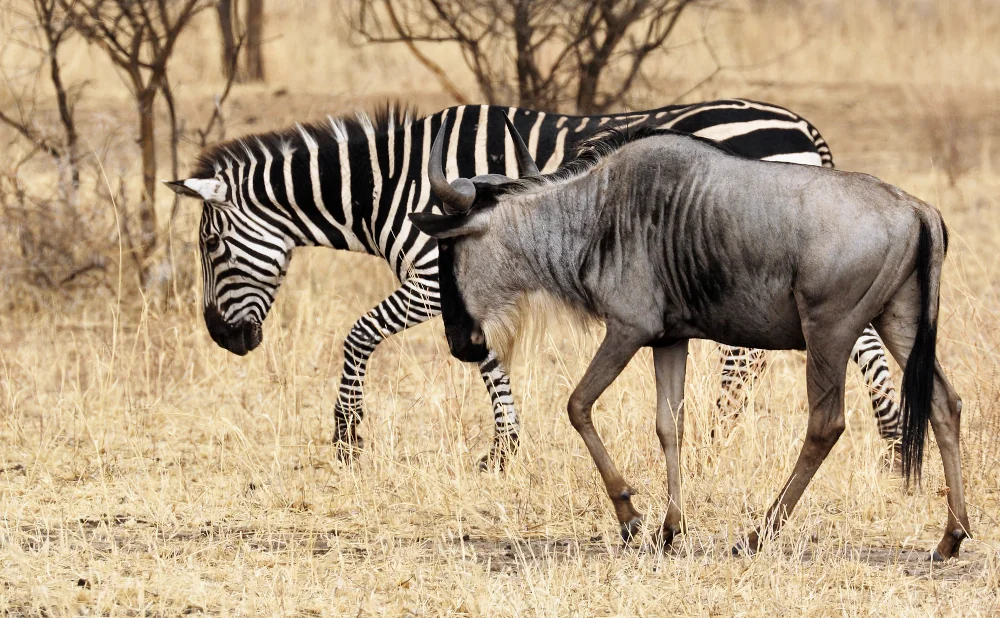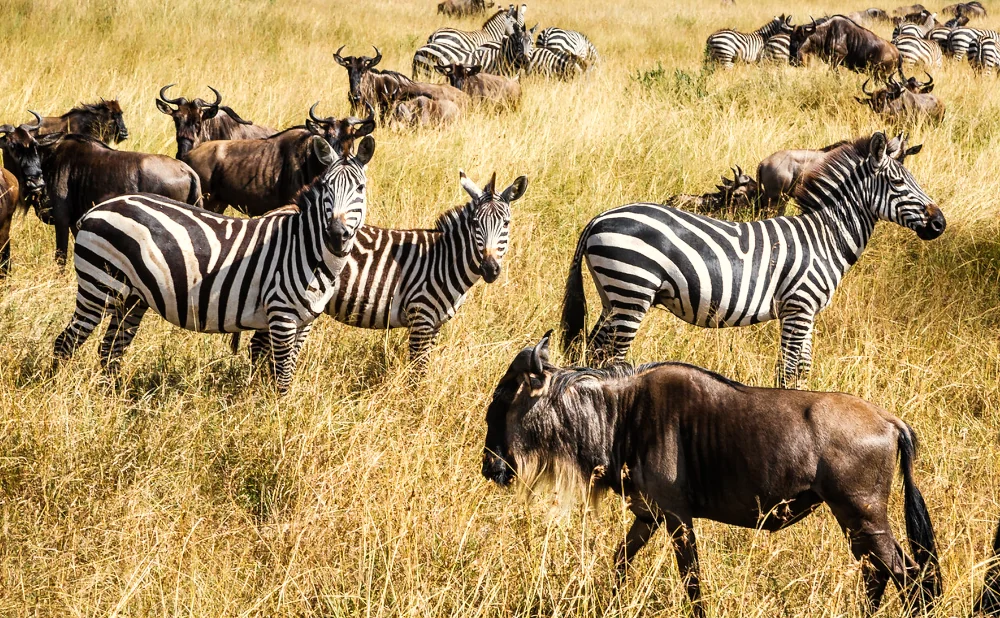Exploring the Rich Cultures of Tanzanian Tribes
Tanzania, a country in East Africa, is a vibrant tapestry of cultures. It is home to over 120 distinct tribes, each with its unique traditions, languages, and ways of life.
""
The richness of Tanzanian tribes culture is a testament to the country's diversity. From the Maasai warriors to the Chaga farmers, the Sukuma dancers to the Hadzabe hunter-gatherers, each tribe contributes to the cultural mosaic that is Tanzania.
This article aims to take you on a journey through the cultures of Tanzanian tribes. We will delve into their traditions, customs, and lifestyles, offering a glimpse into their world.
Whether you're a cultural enthusiast, a traveler planning a Tanzanian adventure, or simply curious, this guide will provide a comprehensive overview of Tanzanian tribal cultures.
Join us as we explore the rich cultures of Tanzanian tribes, celebrating their diversity and learning about their unique ways of life.
The Mosaic of Tanzanian Tribes
Tanzania is a country of incredible cultural diversity. With over 120 ethnic tribes, it is a melting pot of languages, traditions, and customs.
""
Each tribe in Tanzania has its unique culture and language. Some tribes are well-known internationally, like the Maasai, while others remain less known but equally fascinating.
Here are a few of the tribes we will explore in this article:
- The Maasai: Known for their warriors, cattle-herding, and distinctive red clothing.
- The Chaga: Renowned for their advanced agricultural practices on the slopes of Mount Kilimanjaro.
- The Sukuma: The largest tribe in Tanzania, famous for their vibrant music and dance.
- The Hadzabe: One of the last hunter-gatherer societies in the world.
- The Datoga: Skilled metalworkers often found living near the Hadzabe.
These tribes, among others, form the rich cultural tapestry of Tanzania. Each tribe has its unique story, contributing to the country's cultural heritage and national identity.
The Maasai: A Symbol of Tanzanian Tribal Culture
The Maasai tribe is one of the most recognized tribes in Tanzania. Their vibrant red clothing, known as "shuka," and their warrior culture have made them a symbol of Tanzanian tribal culture.
""
The Maasai are primarily cattle herders. They believe that all cattle in the world belong to them, a belief that has sometimes led to conflicts with neighboring tribes.
Their society is organized into age sets. Young boys are trained to become warriors, protecting the tribe and its cattle.
The Maasai live in "manyattas," or homesteads, made of mud, sticks, grass, cow dung, and cow's urine. Each manyatta is surrounded by a fence to protect the cattle from predators.
Maasai Traditions and Lifestyle
The Maasai's lifestyle revolves around their cattle. They measure wealth by the number of cattle and children one has.
Their diet primarily consists of meat, milk, and blood from cattle. However, the practice of blood-drinking is less common today.
The Maasai are known for their "adumu," a jumping dance performed by the warriors. This dance is a competitive display of the warriors' strength and agility.
Traditional Maasai clothing is made of red cloth, adorned with intricate beadwork. The beadwork is not just decorative but also carries symbolic meanings.
The Maasai in Modern Times
Modernization has brought changes to the Maasai way of life. Many Maasai have moved to cities for work, while others have turned to farming due to decreasing pasture lands.
However, they still hold on to their traditions. Many Maasai continue to wear traditional clothing and practice their customs, even in urban areas.
The Maasai's resilience and adaptability have allowed them to maintain their cultural identity in the face of modern challenges.
The Chaga: Agriculturalists of Kilimanjaro
The Chaga tribe, also known as the Chagga, inhabit the slopes of Mount Kilimanjaro. They are known for their advanced agricultural practices and the cultivation of bananas and coffee.
""
The Chaga have developed complex irrigation systems to water their crops. These systems, along with the fertile volcanic soil of Kilimanjaro, have made them successful farmers.
Their houses, known as "mbugas," are round and made of sticks, mud, and thatch. The mbugas are often surrounded by banana groves, providing both food and shade.
The Chaga are also known for their local banana beer, "mbege." Mbege plays a significant role in their social and cultural life, often served during celebrations and ceremonies.
Despite the influence of modernization, the Chaga have managed to preserve their traditional farming methods. These methods continue to sustain their communities and contribute to Tanzania's agricultural sector.
Chaga Social and Cultural Practices
The Chaga society is organized into clans, each with its own responsibilities and roles. These clans play a crucial role in social and political matters.
Storytelling is a revered tradition among the Chaga. Through stories, they pass down their history, moral lessons, and cultural values to younger generations.
Despite the influence of Christianity, traditional beliefs still persist among the Chaga. They believe in a supreme being, "Ruwa," and ancestral spirits, who are honored through rituals and offerings.
The Sukuma: Tanzania's Largest Tribe
The Sukuma tribe is the largest ethnic group in Tanzania. They primarily inhabit the northwestern part of the country, in regions rich with savannah grasslands.
""
The Sukuma are primarily agro-pastoralists. They raise cattle and grow crops such as millet, corn, and cotton. Cattle hold a significant place in Sukuma culture, symbolizing wealth and status.
The Sukuma are known for their vibrant music and dance. Their traditional music is characterized by the use of drums, thumb pianos, and string instruments.
Their society is organized into clans, each led by a chief. The chief's role is not only administrative but also spiritual, as they are believed to communicate with ancestral spirits.
Despite the influence of modernization, the Sukuma have managed to preserve their traditional lifestyle. Their culture continues to thrive, contributing to the rich tapestry of Tanzanian tribal cultures.
Sukuma Music and Dance
Music and dance are integral parts of Sukuma culture. They are used to celebrate, to mourn, and to mark important life events.
One of the most famous Sukuma dances is the "bulabo." This dance involves balancing objects, such as pots or bottles, on the dancers' heads during festivals.
The Sukuma's music and dance traditions are not only a form of entertainment but also a means of preserving their cultural heritage. Through these traditions, they pass down their history and values to younger generations.
The Hadzabe and Datoga: Preserving Ancient Ways
In the shadow of Lake Eyasi, two Tanzanian tribes, the Hadzabe and Datoga, continue to uphold their ancient ways of life. These tribes offer a glimpse into the past, preserving traditions that have endured for centuries.
""
The Hadzabe are one of the last remaining hunter-gatherer societies in the world. They live in small, mobile groups, hunting game and gathering wild fruits and tubers for sustenance.
The Datoga, on the other hand, are skilled metalworkers. They are often found living near the Hadzabe, trading their metal goods for the products of the Hadzabe's hunting and gathering.
Despite the encroachment of modernity, these tribes have managed to maintain their traditional lifestyles. Their cultures serve as a testament to the resilience and adaptability of Tanzanian tribal societies.
Hadzabe: The Hunter-Gatherers
The Hadzabe tribe's way of life is deeply rooted in their environment. They rely on the land for their survival, hunting game with bows and arrows and gathering wild fruits and tubers.
Their language is unique, characterized by a series of click sounds. This linguistic feature sets them apart from other Tanzanian tribes.
Despite the challenges posed by modernization, the Hadzabe continue to uphold their hunter-gatherer lifestyle. Their culture is a living testament to human adaptability and resilience.
Datoga: The Blacksmiths
The Datoga tribe is renowned for its metalworking skills. They forge tools, jewelry, and weapons from iron, copper, and brass.
Their society is patriarchal, with men responsible for herding livestock and women tasked with farming and household chores. Facial scarification, a distinctive cultural practice, is common among the Datoga.
Despite the pressures of modernization, the Datoga have managed to preserve their traditional way of life. Their culture is a vibrant part of Tanzania's tribal mosaic.
Language and Communication Among Tanzanian Tribes
Tanzania is a linguistic tapestry, with over 120 ethnic tribes each speaking their own unique language. This linguistic diversity is a testament to the country's rich cultural heritage.
Swahili, the national language, serves as a unifying force among the tribes. It is widely spoken and understood, facilitating communication across different ethnic groups.
Despite the dominance of Swahili and English, many Tanzanian tribes continue to use their native languages. These languages are an integral part of their cultural identity, preserving unique expressions of thought, tradition, and worldview.
Artistic Expressions: Tanzanian Tribal Art and Music
Art and music are vital aspects of Tanzanian tribes culture. They serve as mediums of expression, storytelling, and preservation of history.
Tanzanian tribal art is diverse and rich, ranging from intricate beadwork and pottery to elaborate wood carvings. These artistic expressions often carry symbolic meanings, reflecting the tribe's beliefs, values, and traditions.
Music, too, is deeply ingrained in Tanzanian tribal culture. Each tribe has its own unique musical style, instruments, and songs. Music accompanies most social and religious events, reinforcing communal bonds and shared identity.
From the rhythmic drum beats of the Sukuma to the haunting melodies of the Hadzabe, Tanzanian tribal music is a captivating reflection of the country's cultural diversity.
Rituals, Ceremonies, and Tanzanian Tribal Religions
Rituals and ceremonies are central to Tanzanian tribes culture. They mark significant life events, communal affairs, and changes in seasons.
For instance, the Maasai's "adumu," a jumping dance, is a rite of passage for young warriors. The Chaga celebrate harvests with "mbege," a local banana beer, in a communal ceremony.
Religion, too, plays a significant role in Tanzanian tribal life. Traditional beliefs often coexist with modern religions, creating a unique fusion of faiths. Ancestral worship, reverence for nature, and belief in spirits are common elements in many tribal religions.
These rituals, ceremonies, and religious practices provide a sense of identity and continuity, linking the present to the past and the community to its ancestors.
The Role of Women in Tanzanian Tribes
In Tanzanian tribes, the role of women varies greatly. In some tribes, women are the custodians of cultural knowledge, passing down traditions and skills to younger generations. They play a vital role in the community, often responsible for gathering food, caring for children, and maintaining the household.
In other tribes, women have a more public role. They participate in decision-making processes, own property, and even inherit matrilineally. Despite these variations, women are universally respected for their contributions to the tribe's survival and continuity.
However, the impact of modernization and globalization is changing the traditional roles of women in Tanzanian tribes. This shift brings both challenges and opportunities for gender equality and women's empowerment.
Modern Challenges and the Future of Tanzanian Tribal Cultures
Tanzanian tribes face numerous challenges in the modern world. The encroachment of modernization and globalization threatens their traditional ways of life. This includes the loss of tribal lands, the erosion of cultural practices, and the influence of Western lifestyles.
Climate change also poses a significant threat. Changes in weather patterns affect the livelihoods of tribes, particularly those dependent on agriculture and livestock. This forces them to adapt their centuries-old practices and traditions.
Despite these challenges, Tanzanian tribes are resilient. They are finding ways to preserve their cultures while adapting to the modern world. This includes leveraging tourism for economic benefits, while ensuring it respects and supports their cultural heritage.
The future of Tanzanian tribal cultures lies in striking a balance between preservation and adaptation. It's a delicate task, but one that is crucial for the survival and continuity of these rich and diverse cultures.
The Importance of Preserving Tanzanian Tribal Heritage
The rich cultures of Tanzanian tribes are a testament to the country's diverse heritage. They offer a window into the past, showcasing unique traditions, languages, and ways of life. Preserving these cultures is crucial, not just for Tanzania, but for the world.
Each tribe contributes to the cultural mosaic that is Tanzania. Their stories, art, music, and traditions enrich our global cultural tapestry. They provide invaluable insights into human history and diversity.
In conclusion, the preservation of Tanzanian tribal cultures is a shared responsibility. It requires respect, understanding, and concerted efforts from all of us.











